The Ultimate Guide to Natural Tocopherol-Vitamin E: Science, Benefits & Premium Sourcing
1. What is Tocopherol Vitamin E?
Tocopherol, universally recognized as Vitamin E, is a potent fat-soluble antioxidant and an essential micronutrient. It primarily exists in eight chemical forms: alpha-, beta-, gamma-, and delta-tocopherols, and alpha-, beta-, gamma-, and delta-tocotrienols. Alpha-tocopherol is the form most actively retained and utilized by the human body and is often the benchmark for Vitamin E activity. Its primary biological role involves protecting cell membranes from oxidative damage caused by espécies reativas de oxigênio (ERO) e lipid peroxidation, crucial for maintaining cellular integrity.
2. Fonte, Propriedades Químicas e Identificação
Fontes naturais primárias: Abundant in plant oils (wheat germ, sunflower, safflower), nuts (almonds, hazelnuts), seeds, green leafy vegetables, and fortified cereals. Natural d-alpha-tocopherol is preferred over synthetic dl-alpha-tocopherol due to superior bioavailability.
Propriedades químicas:
Número CAS: 59-02-9 (d-alpha-Tocopherol), 10191-41-0 (Tocopherols, mixed)
Fórmula Molecular (FM): C29H50O2 (alpha-Tocopherol)
Peso molecular (PM): 430.71 g/mol
EINECS: 200-412-2 (d-alpha-Tocopherol)
Key Characteristics: A viscous, pale yellow oil, insoluble in water but soluble in fats, oils, and organic solvents. Sensitive to heat, light, and oxidation.
3. Identifying the Best Tocopherol: A Comprehensive Analysis
Choosing premium tocopherol involves scrutinizing several factors:
Key Components & Purity: Opt for high-purity natural d-alpha-tocopherol (>98%) or carefully standardized mixed tocopherol concentrates (rich in d-alpha, d-gamma, d-delta). Synthetic dl-alpha-tocopherol is less bioactive. Rigorous HPLC analysis confirms composition and potency.
Potency & Bioavailability: Natural d-alpha-tocopherol exhibits significantly higher biological activity (measured in International Units – IU, or mg RRR-alpha-tocopherol equivalents) compared to its synthetic counterpart. Gamma-tocopherol also possesses unique antioxidant properties relevant to health.
Origin & Extraction: Source matters. Look for tocopherol derived from non-GMO, sustainably sourced plant oils (e.g., European sunflower, US soybean) using advanced molecular distillation ou supercritical CO2 extraction. This ensures minimal solvent residues and optimal preservation of bioactive isomers. Traceability from raw material to final product is crucial.
Compliance & Safety: Premium suppliers provide comprehensive Certificates of Analysis (CoA) verifying identity, purity, potency, and safety (heavy metals, pesticides, microbes) against stringent standards (USP, Ph. Eur., FCC, FDA GRAS). Adherence to cGMP (Current Good Manufacturing Practices) is non-negotiable.
Application & Delivery: The best form depends on the end-use:
Oil Soluble (d-alpha-tocopherol): Ideal for softgels, cosmetics, oils.
Water-Dispersible (e.g., tocopheryl acetate, tocopheryl polyethylene glycol succinate – TPGS): Essential for clear beverages, tablets, enhanced bioavailability in low-fat applications.
Health Benefits & Mechanisms:
Antioxidante potente: Protects cell membranes from lipid peroxidation, neutralizing free radicals.
Immune Support: Enhances T-cell mediated immunity.
Saúde da pele: Topically and orally, it protects skin from UV damage, promotes wound healing, and combats photoaging. A key cosmeceutical ingredient.
Cardiovascular Health: Inibe LDL oxidation, potentially reducing atherosclerosis risk.
Neurological Protection: May help protect neuronal membranes; role in age-related cognitive decline under investigation.
Eye Health: Protects retinal cells; associated with reduced risk of age-related macular degeneration (AMD).
Daily Intake & Dosage (RDA):
Adults: 15 mg (22.4 IU) of alpha-tocopherol daily (NIH guidelines). Tolerable Upper Intake Level (UL) is 1000 mg/day for supplemental alpha-tocopherol. Dosages for specific health conditions should be medically supervised.
Usage Guidelines: Follow product-specific recommendations. Typically taken orally with fat-containing meals to enhance absorption. For topical use, incorporate into formulations at efficacious levels (e.g., 0.1-5%).
Applicable Population: Generally safe for adults. Consult a physician before use by pregnant/nursing women, children, individuals with bleeding disorders (e.g., on anticoagulants like warfarin), vitamin K deficiency, or prior to surgery.
Crucial Considerations & Potential Side Effects:
High doses (>300 mg/day) may increase risk of hemorrhagic stroke.
Potential anticoagulant effects; monitor closely if on blood thinners.
Rare side effects: nausea, diarrhea, stomach cramps, fatigue, headache, blurred vision.
Ensure product is stored away from light, heat, and oxygen to prevent degradation.
Allergen Statement: Verify sourcing if specific plant oil allergies exist (e.g., soybean).
4. Premium Sourcing: Shaanxi Zhonghong Investment Technology Co., Ltd.
Tecnologia de Investimento Shaanxi Zhonghong Co., Ltd. stands as a leading empresa de alta tecnologia na vanguarda de composto bioativo research, manufacturing, and global supply. For over 28 anos, we have specialized in the advanced extração, isolamento e purificação of premium natural plant extracts, serving the demanding needs of the chemical, materials, and indústrias de ciências biológicas.
Especialização principal: Natural Tocopherol (Vitamin E), Extratos Naturais de Plantas, Cosmetic Active Ingredients, Nutraceutical Ingredients, Pharmaceutical Intermediates, Natural Pigments, Natural Sweeteners.
Rigor científico incomparável:
Research Fortress: Strategic collaborations with 5 universidades de elite através de Joint Research Laboratories.
Proprietary Technology: Holding Mais de 20 patentes and maintaining a biblioteca de compostos globalmente exclusiva for novel applications.
Cutting-Edge Quality Infrastructure:
Análise avançada: Equipado com HPLC (Cromatografia Líquida de Alta Eficiência), UPLC (Ultra-Performance LC), GC-MS (Cromatografia Gasosa-Espectrometria de Massas), e RMN (Espectroscopia de Ressonância Magnética Nuclear).
Superior Purity: Our tocopherol consistently exceeds industry purity standards by >20%, guaranteed by our state-of-the-art detection systems.
Global Reach & Customization: Our robust supply network seamlessly delivers to Mais de 80 países across Asia, Europe, and the Americas. We excel in providing bespoke ingredient solutions tailored to the unique specifications of multinational pharmaceutical corporations, innovative research institutions, and premium supplement/formulation brands.
5. Product Specification & Certificate of Analysis (CoA)
Our Natural Tocopherol (d-alpha or Mixed) meets the highest international quality and safety standards. Below is a summary of our comprehensive CoA:
| Categoria de parâmetro | Item de teste | Limite de especificação | Método de teste |
|---|---|---|---|
| Resíduos de pesticidas | Total BHC (α,β,γ,δ) | ≤ 0.2 mg/kg | GC-ECD/GC-MS/MS |
| Total DDT (o,p’-, p,p’-DDT, DDE, DDD) | ≤ 0.2 mg/kg | GC-ECD/GC-MS/MS | |
| Quintozene (PCNB) | ≤ 0,01 mg/kg | GC-ECD/GC-MS/MS | |
| Hexachlorobenzene | ≤ 0,01 mg/kg | GC-ECD/GC-MS/MS | |
| Aldrin + Dieldrin | ≤ 0,01 mg/kg | GC-ECD/GC-MS/MS | |
| Ethylene Oxide (ETO) | ≤ 0,02 mg/kg | GC-MS (Headspace) | |
| 2-Chloroethanol (2-CE) | ≤ 0,02 mg/kg | GC-MS (Headspace) | |
| Metais Pesados | Chumbo (Pb) | ≤ 0,5 mg/kg | ICP-MS / AAS |
| Arsênio (As) | ≤ 0,5 mg/kg | ICP-MS / HG-AAS | |
| Cádmio (Cd) | ≤ 0,1 mg/kg | ICP-MS / AAS | |
| Mercúrio (Hg) | ≤ 0,1 mg/kg | Vapor Frio AAS / ICP-MS | |
| Microbiológico | Contagem total de pratos | ≤ 1.000 UFC/g | USP <61> / EP 2.6.12 |
| Levedura e mofo | ≤ 100 UFC/g | USP <61> / EP 2.6.12 | |
| Escherichia coli | Ausente em 1g | USP <62> / EP 2.6.13 | |
| Salmonella spp. | Ausente em 10g | USP <62> / ISO 6579 | |
| Staphylococcus aureus | Ausente em 1g | USP <62> / EP 2.6.13 | |
| Pseudomonas aeruginosa | Ausente em 1g | USP <62> / EP 2.6.13 |
Additional specifications include Appearance, Identification (FTIR/NMR), Assay (HPLC), Specific Rotation, Loss on Drying, Residue on Ignition, Peroxide Value, and more, compliant with USP/Ph.Eur/FCC.
6. Fluxo de Produção Avançado
Our tocopherol manufacturing integrates cutting-edge technology for maximum purity and sustainability:
Raw Material Sourcing & QC: Premium, identity-verified, non-GMO plant oils (e.g., sunflower, soybean distillates).
Initial Extraction: Solvent extraction or physical pressing to obtain crude vegetable oil fractions rich in tocopherols.
Molecular Distillation: Under high vacuum and precise temperature control, this low-temperature short-path distillation separates tocopherols from sterols, free fatty acids, and glycerides with minimal thermal degradation.
Ethanol Fractionation/Crystallization: Further purification to isolate specific tocopherol isomers or remove trace impurities.
Supercritical CO2 Extraction (Optional): An ultra-clean, solvent-free method for high-purity isolates, particularly for sensitive applications.
Esterification (if applicable): Conversion to stable esters (e.g., Tocopheryl Acetate) using acetic anhydride under controlled conditions.
Purificação e secagem final: Chromatography or additional distillation steps to achieve pharma-grade purity. Removal of residual solvents/moisture.
Rigorous Quality Control: Comprehensive testing against specifications (HPLC assay, heavy metals, pesticides, microbes, etc.) before release.
Lavagem e embalagem de nitrogênio: Para evitar oxidação durante armazenamento e transporte.
7. Diversos cenários de aplicação
Nutracêuticos e suplementos alimentares: Softgels, capsules, tablets (using TPGS), functional foods/beverages for antioxidant and immune support.
Cosmeceuticals & Skincare: Anti-aging creams, serums, sunscreens, lip balms, hair care products for UV protection, moisturization, and barrier repair.
Produtos farmacêuticos: Active ingredient or stabilizer in topical formulations, injectables (using solubilized forms like TPGS), and oral medications.
Food & Beverage Industry: Natural antioxidant/preservative (E306-E309) in oils, fats, meat products, dairy, and baked goods to prevent rancidity.
Nutrição Animal: Feed additive for livestock, poultry, and aquaculture to improve health, fertility, and product quality.
8. Controle de Qualidade Rigoroso (CQ)
Quality is the cornerstone of our tocopherol production. Our ISO 9001 and potentially ISO 22000/FSSC 22000 certified QC system ensures every batch meets or exceeds global pharmacopeial standards (USP, Ph. Eur., JP, CP). This multi-tiered approach includes:
Inspeção de matéria-prima recebida: Rigorous identity, purity, and contaminant testing using FTIR, GC, and ICP-MS.
Controles em processo (IPC): Critical parameter monitoring (temp, pressure, pH, solvent levels) at every stage, with intermediate HPLC checks for tocopherol profile.
Estudos de estabilidade: Accelerated and real-time studies under ICH guidelines to establish shelf life and optimal storage conditions.
Final Product Release Testing: Exhaustive analysis per CoA requirements (Assay, Isomer Profile, Heavy Metals, Pesticides, Microbiological, Residual Solvents, Physicochemical specs) using calibrated, validated methods (HPLC, GC-MS, ICP-MS, Microbial Enumeration/Pathogen Testing).
Documentation & Traceability: Full cGMP documentation ensures batch traceability from raw material source through production, testing, and final distribution. Electronic Batch Records (EBR) enhance accuracy and compliance. Our commitment to purity >98% e contaminant levels 20% below industry norms is demonstrable and certified.
9. Embalagem Segura e Logística Global
Embalagem primária: Food-grade Tambores de HDPE (25kg, 180kg) or stainless steel containers (bulk), internally lined or flushed with high-purity nitrogen to prevent oxidation. Tamper-evident seals standard.
Embalagem secundária: Robust corrugated cartons for smaller units. Temperature-controlled options available for sensitive shipments.
Rotulagem: Compliant with destination regulations, including Product Name, CAS, Batch No., MF, MW, Expiry, Storage Conditions, Safety Symbols (GHS if applicable), Barcode.
Armazenar: -5°C to 10°C (23°F to 50°F) recommended for long-term stability. Protect from light and moisture. Keep container tightly sealed under nitrogen atmosphere.
Logística Global: Efficient shipping via air, sea, or land. Expertise in handling hazardous materials documentation (if applicable). Cold chain logistics available. Seamless customs clearance support.
10. Deep Dive: Health Mechanisms, Innovation & Research Frontiers
Mechanism of Action: Tocopherol’s primary role is as a chain-breaking antioxidant. It donates a phenolic hydrogen to lipid peroxyl radicals (LOO•), forming a stable tocopheroxyl radical, thereby terminating the lipid peroxidation chain reaction within cell membranes. It regenerates in vivo by Vitamin C and other reductants. Gamma-tocopherol uniquely traps reactive nitrogen species (RNS).
Aplicações industriais e inovação tecnológica: Beyond basic supplementation, innovations include:
Nanoemulsions & Liposomes: Enhancing topical and oral bioavailability.
Stabilized Derivatives: TPGS for water solubility and enhanced absorption.
Synergistic Blends: Combining with Vitamin C, Selenium, Carotenoids for amplified antioxidant networks (“ACE antioxidants“).
Targeted Delivery Systems: For specific tissue delivery.
Research Frontiers & Challenges:
Tocotrienols: Exploring the potentially superior cardiovascular and neuroprotective benefits of these Vitamin E isomers.
Personalized Nutrition: Defining optimal Vitamin E forms and dosages based on genetics (e.g., TTPA gene mutations), health status, and microbiome.
Cancer Prevention/Therapy: Complex role; high-dose effects require further elucidation.
Neurodegenerative Diseases: Defining efficacy in Alzheimer’s, Parkinson’s.
Sustainability: Optimizing extraction yields, reducing waste, utilizing novel feedstocks.
Analytical Challenges: Precise quantification of all vitamers in complex matrices.
11. Perguntas Frequentes (FAQ)
Q: What’s the difference between natural and synthetic Vitamin E?
UM: Natural (d-alpha-tocopherol) is sourced from plants and has higher bioavailability (~2x) and biological activity than synthetic (dl-alpha-tocopherol). Look for “d-” or “RRR-” on labels.
Q: Is topical Vitamin E effective?
UM: Yes! It penetrates the skin, providing antioxidant protection against UV damage, improving hydration, reducing inflammation, and supporting wound healing. Stability in formulations is key.
Q: Can I take too much Vitamin E?
UM: Yes. High doses (>1000 mg/day supplemental alpha-tocopherol) can increase bleeding risk, especially if on blood thinners. Stick to the RDA (15 mg) unless advised otherwise by a doctor.
Q: Does Vitamin E interact with medications?
UM: It can potentiate anticoagulants (warfarin, aspirin) and reduce the efficacy of some chemotherapy drugs. Always inform your doctor about supplements.
Q: What’s better: alpha-tocopherol or mixed tocopherols?
UM: Alpha is essential, but gamma and delta tocopherols offer unique benefits (e.g., trapping RNS). A balanced mixed tocopherol supplement may provide broader antioxidant coverage.
Q: How should I store Vitamin E oil/supplements?
UM: Cool, dark place, tightly sealed. Refrigeration can extend shelf life. Avoid heat and humidity.
12. Where to Buy Premium Natural Tocopherol
Tecnologia de Investimento Shaanxi Zhonghong Co., Ltd. is your trusted global partner for high-purity, certified natural tocopherol (Vitamin E) e specialized plant extracts.
Visit Our Website: Explore our full product portfolio and technical resources: aiherba.com
Solicite uma amostra grátis: Experience the Zhonghong quality difference firsthand.
Contact Our Sales Team:
E-mail: liaodaohai@gmail.com
Web Contact Form: Available at aiherba.com/contact
13. Conclusão
Tocopherol (Vitamin E) remains a cornerstone essential nutrient and a powerful lipid-soluble antioxidant with proven benefits for cellular health, immunity, skin vitality, and chronic disease prevention. Choosing the highest quality tocopherol – defined by its natural source (d-alpha), exceptional purity (>98%), rigorous safety certifications (CoA), and advanced production methods – is paramount for efficacy and safety in nutraceutical, cosmetic, and pharmaceutical applications. Tecnologia de Investimento Shaanxi Zhonghong Co., Ltd. alavancas 28 anos de experiência em compostos bioativos, P&D apoiado pela universidade, patented purification technologies, e global cGMP manufacturing to deliver premium, reliable tocopherol solutions. Contact us today to elevate your formulations.
14. Referências
National Institutes of Health (NIH) – Office of Dietary Supplements: Vitamin E Fact Sheet for Health Professionals. https://ods.od.nih.gov/factsheets/VitaminE-HealthProfessional/
European Food Safety Authority (EFSA) Scientific Opinions on Vitamin E health claims (e.g., protection of DNA, proteins, lipids from oxidative damage).
Traber, M. G., & Atkinson, J. (2007). Vitamin E, antioxidant and nothing more. Free Radical Biology and Medicine, 43(1), 4-15.
Brigelius-Flohé, R., & Traber, M. G. (1999). Vitamin E: function and metabolism. The FASEB Journal, 13(10), 1145-1155.
United States Pharmacopeia (USP) Monographs: Tocopherols / Vitamin E. USP-NF.
European Pharmacopoeia (Ph. Eur.) Monographs: Vitamin E (Tocopherol).
Food Chemicals Codex (FCC) Monograph: Vitamin E.
Keen, M. A., et al. (2014). Vitamin E in dermatology. Indian Dermatology Online Journal, 5(2), 175–184.
ICH Guidelines (Q1A-Q1E) – Stability Testing of New Drug Substances and Products.

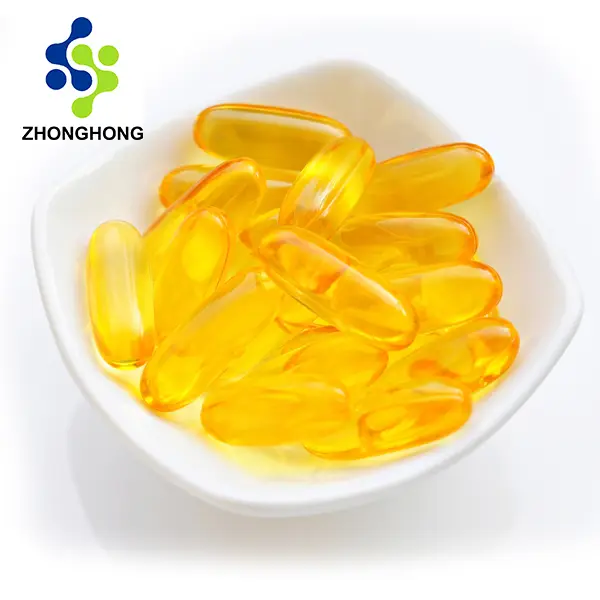
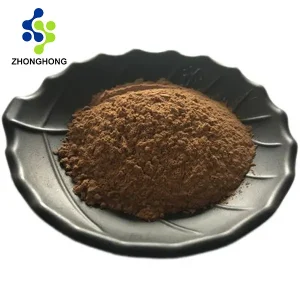
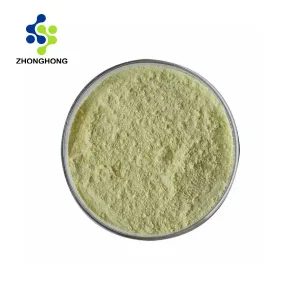
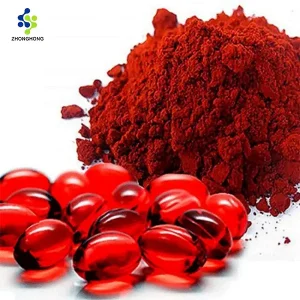
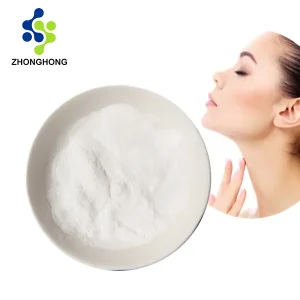
Avaliações
Não existem opiniões ainda.